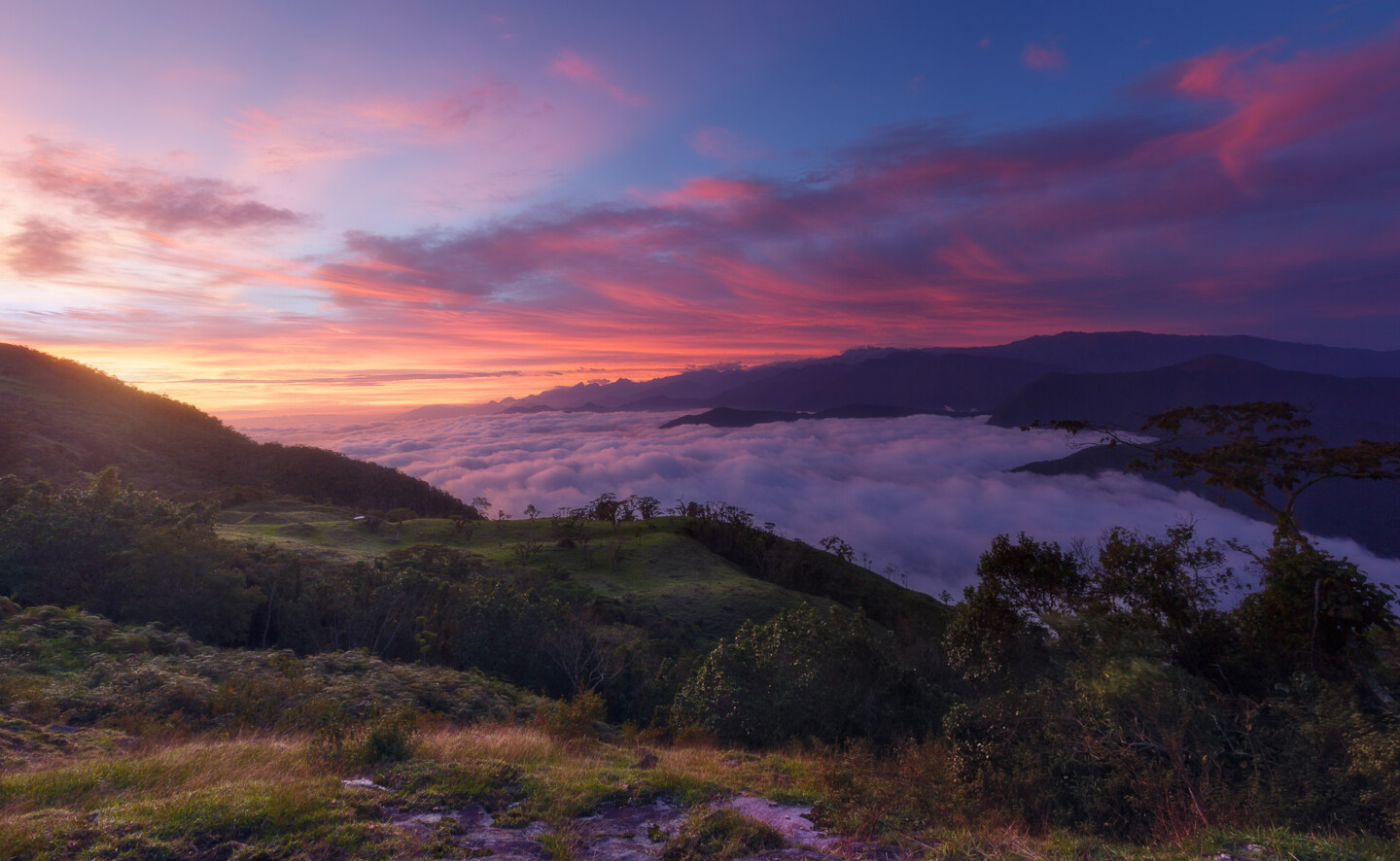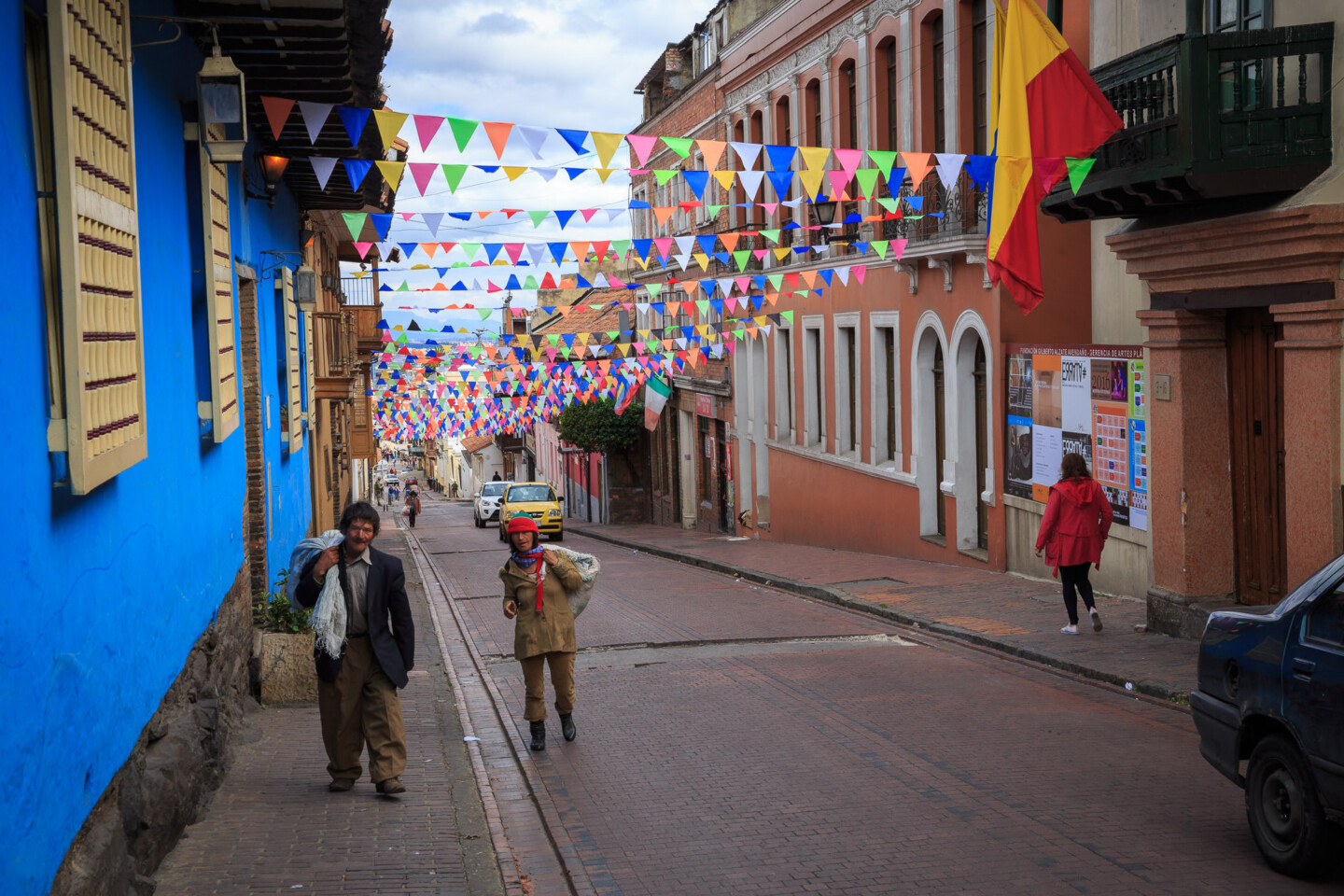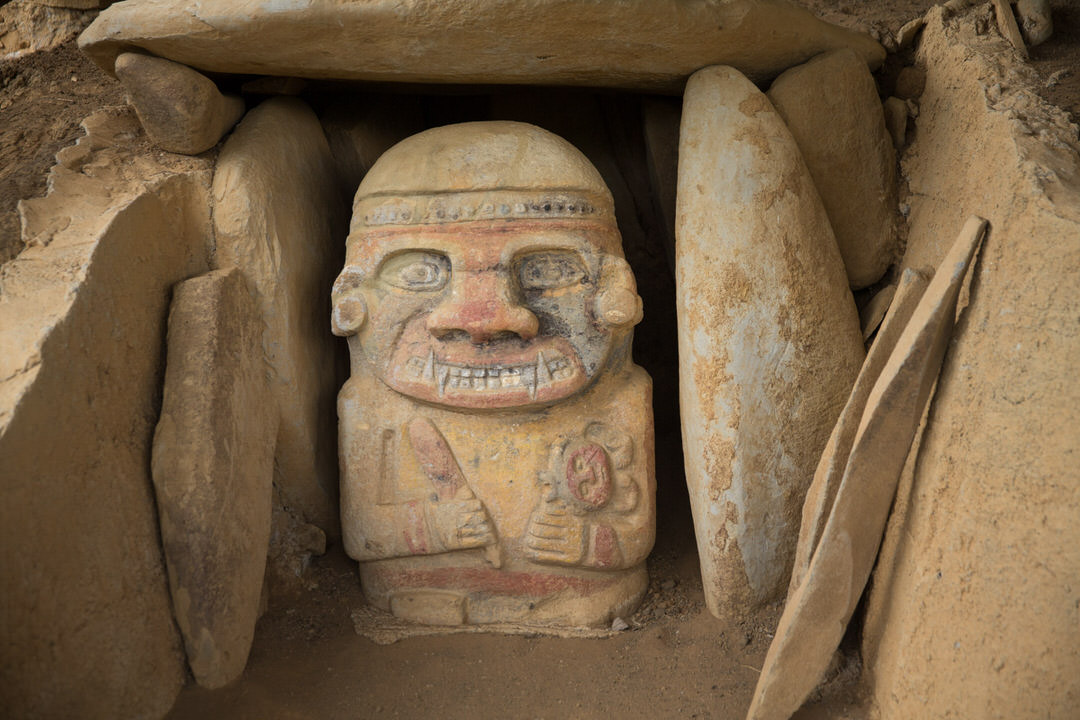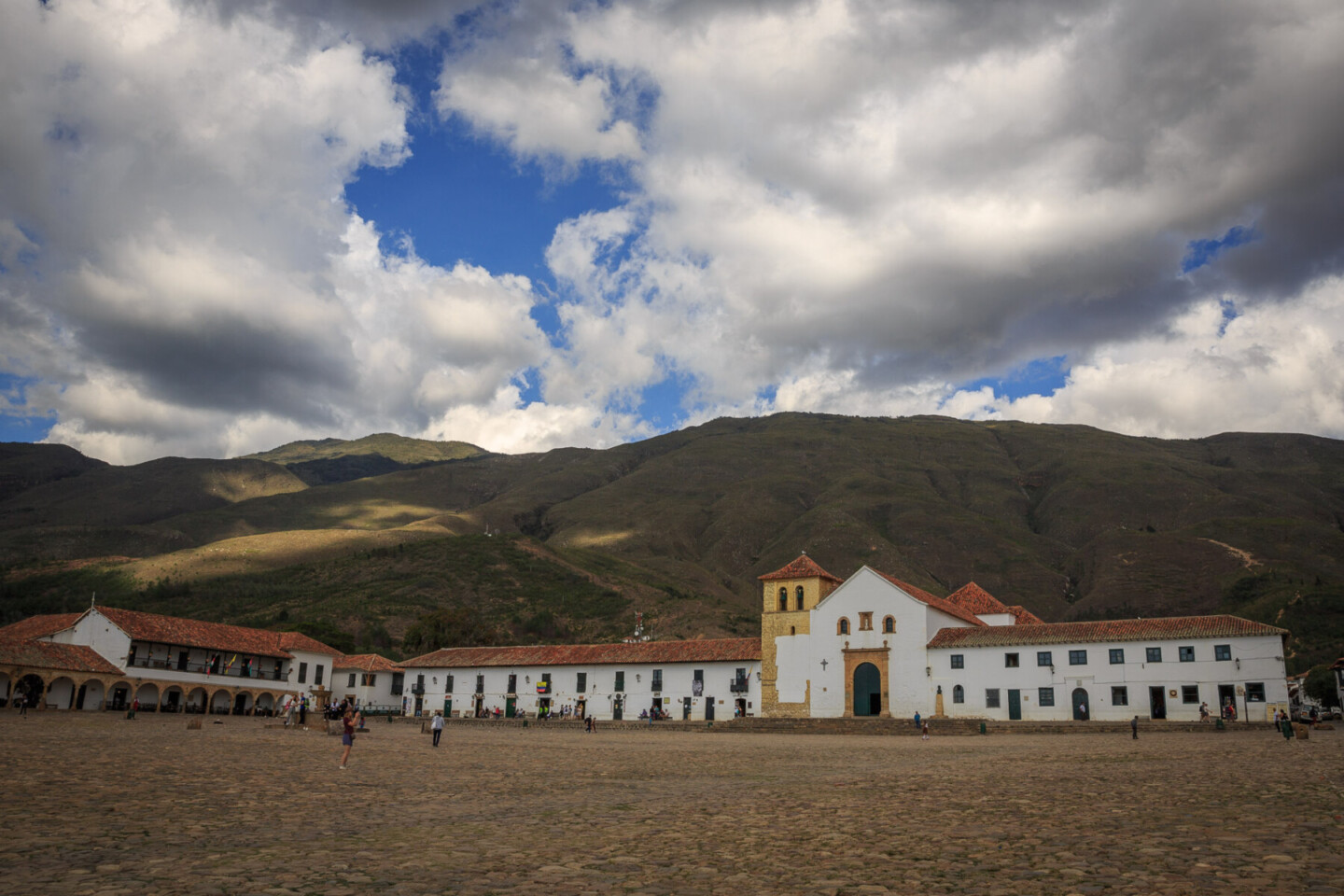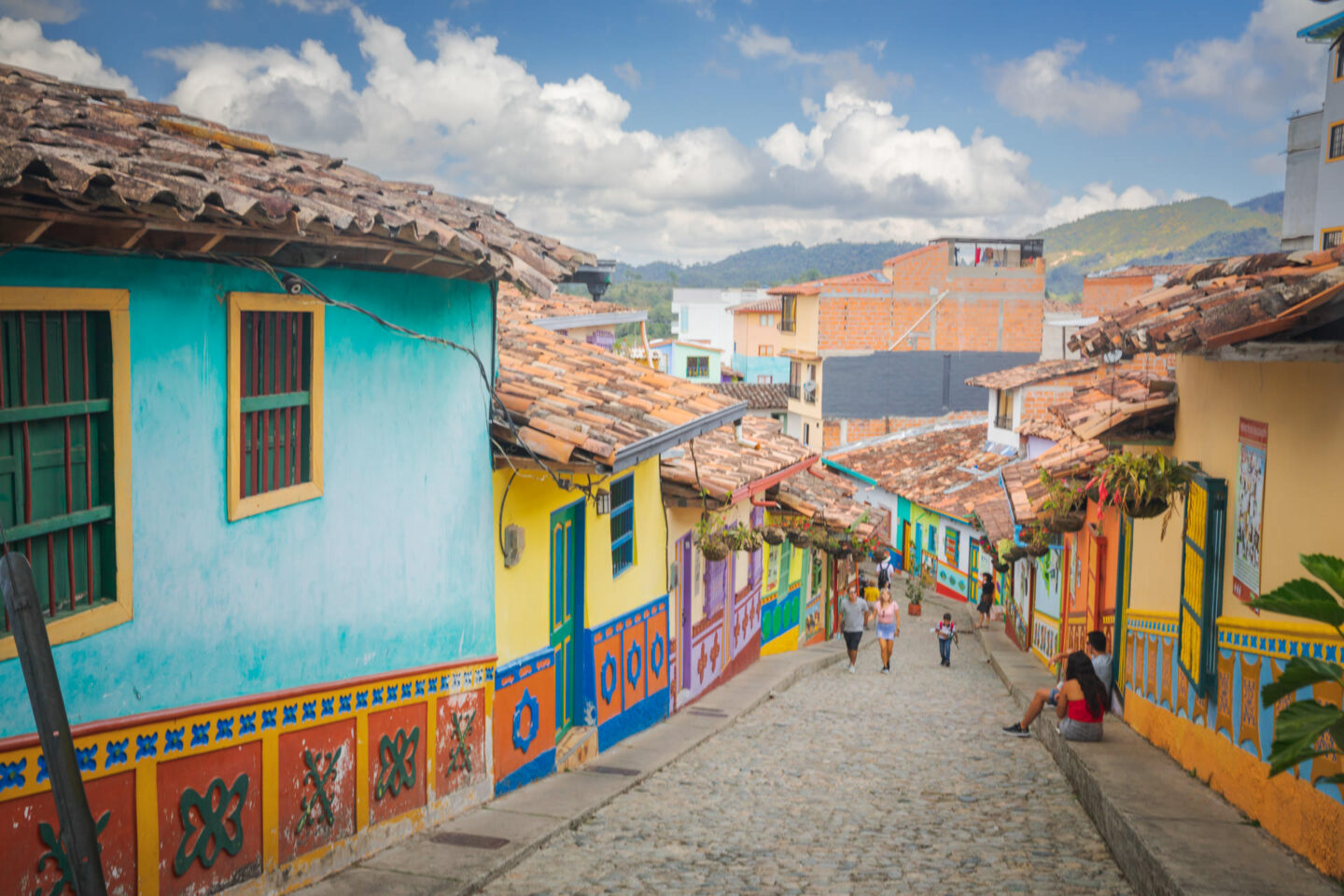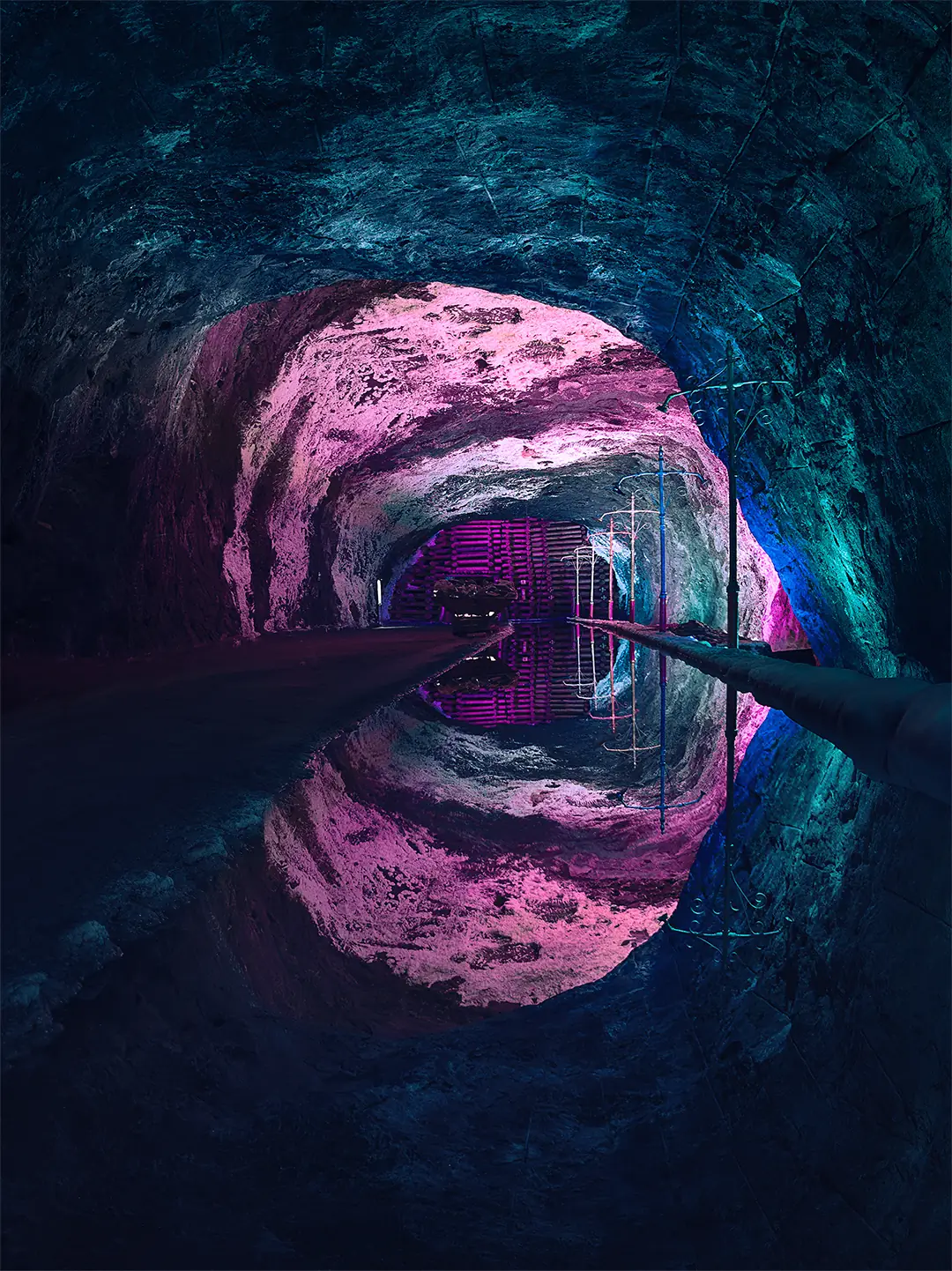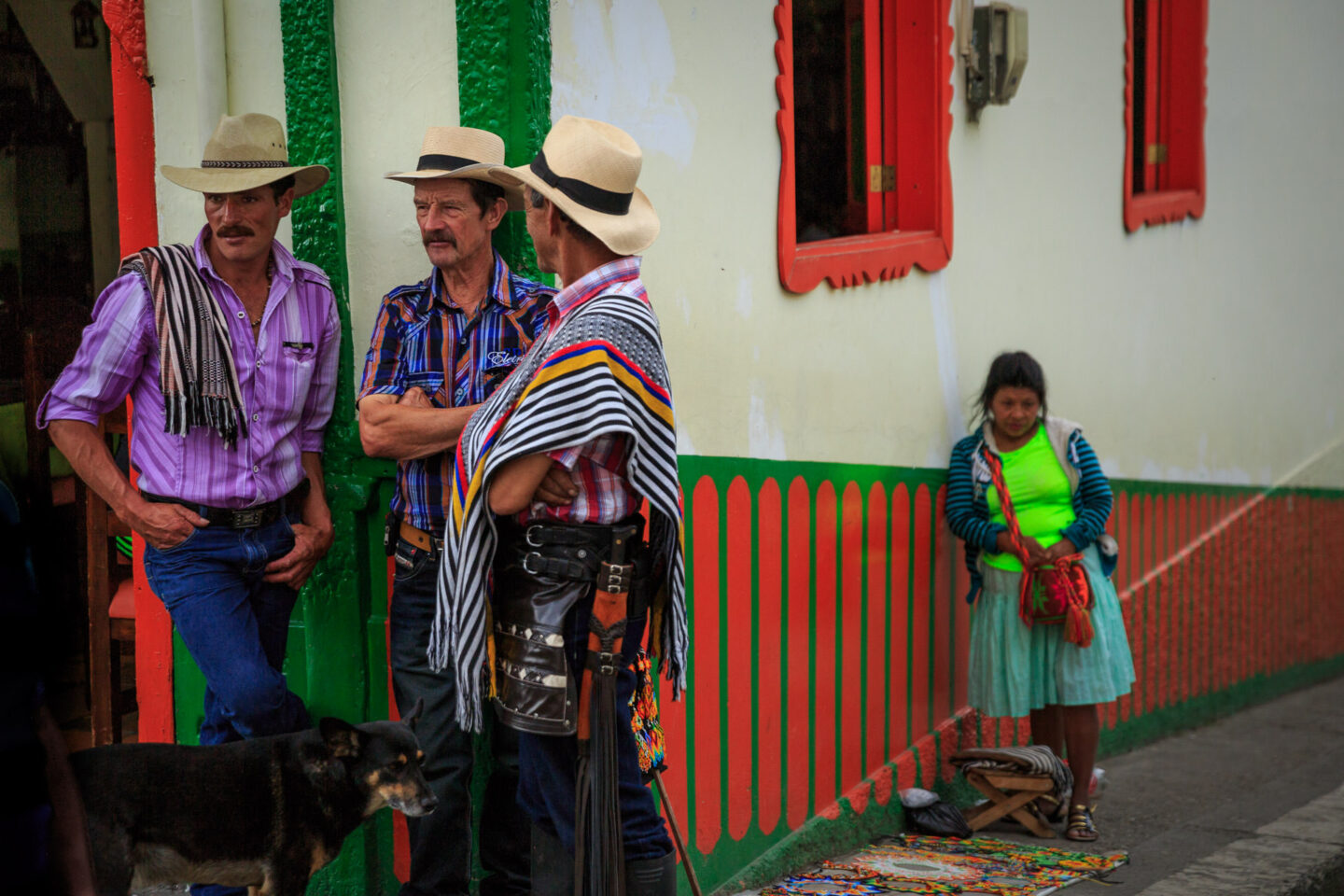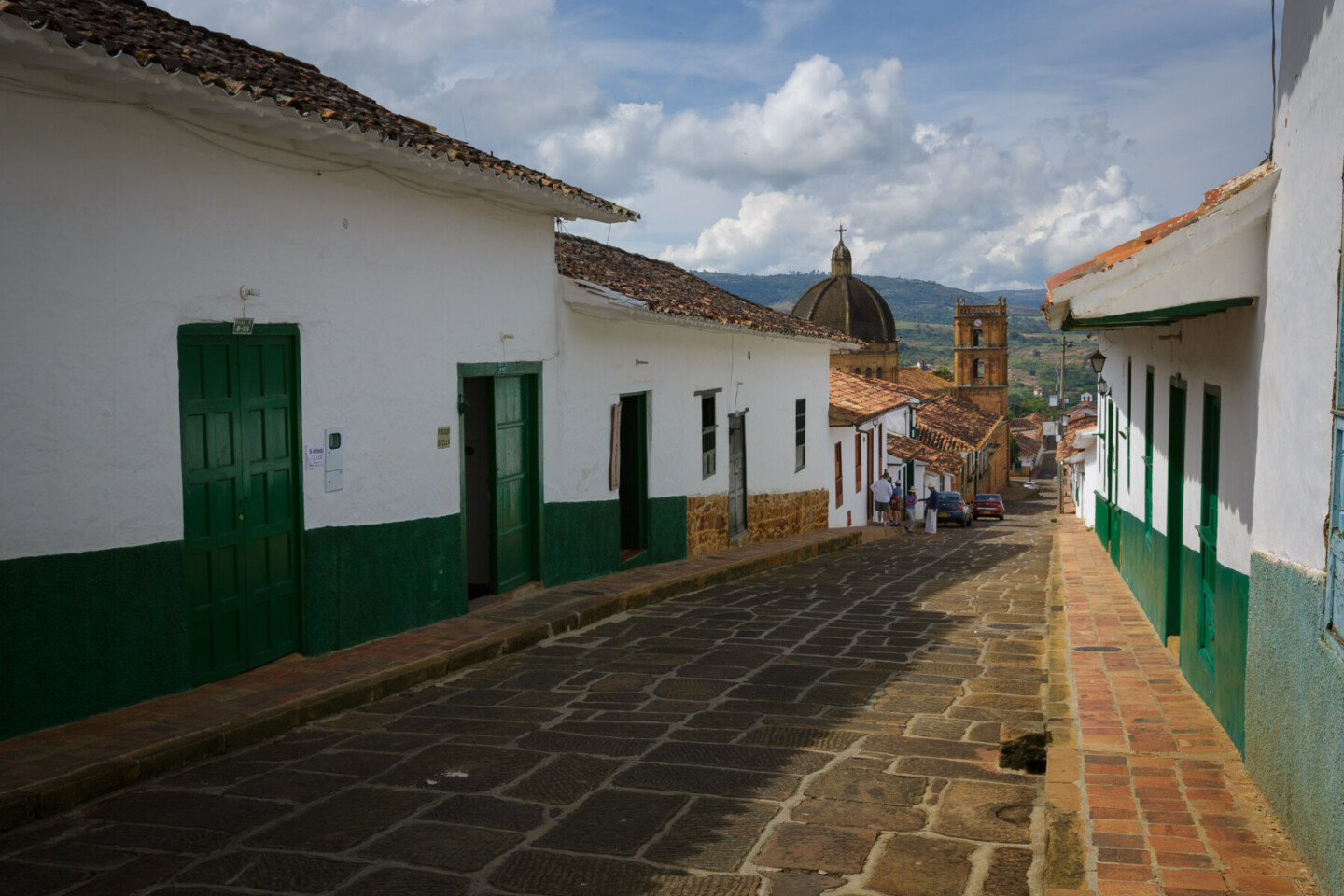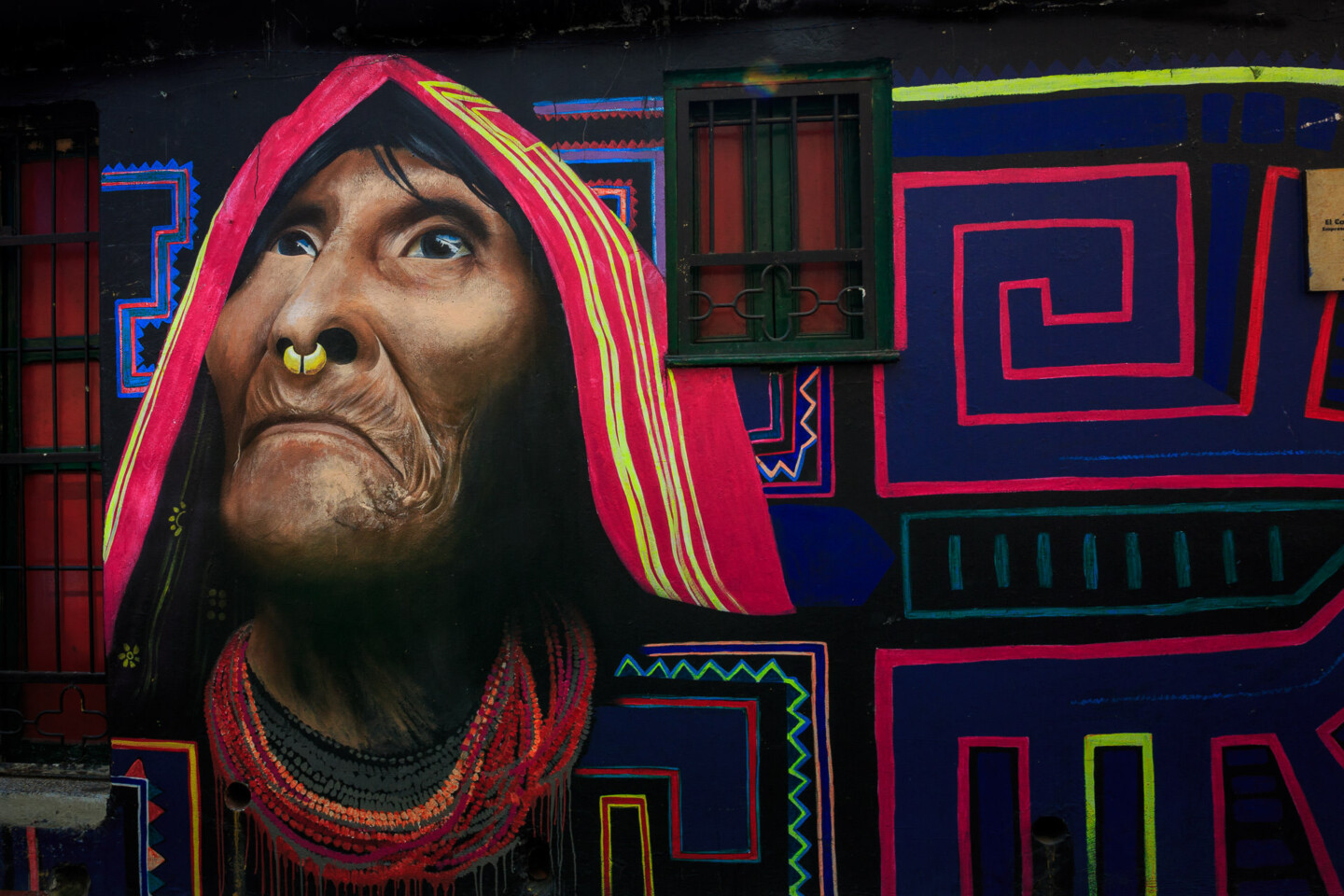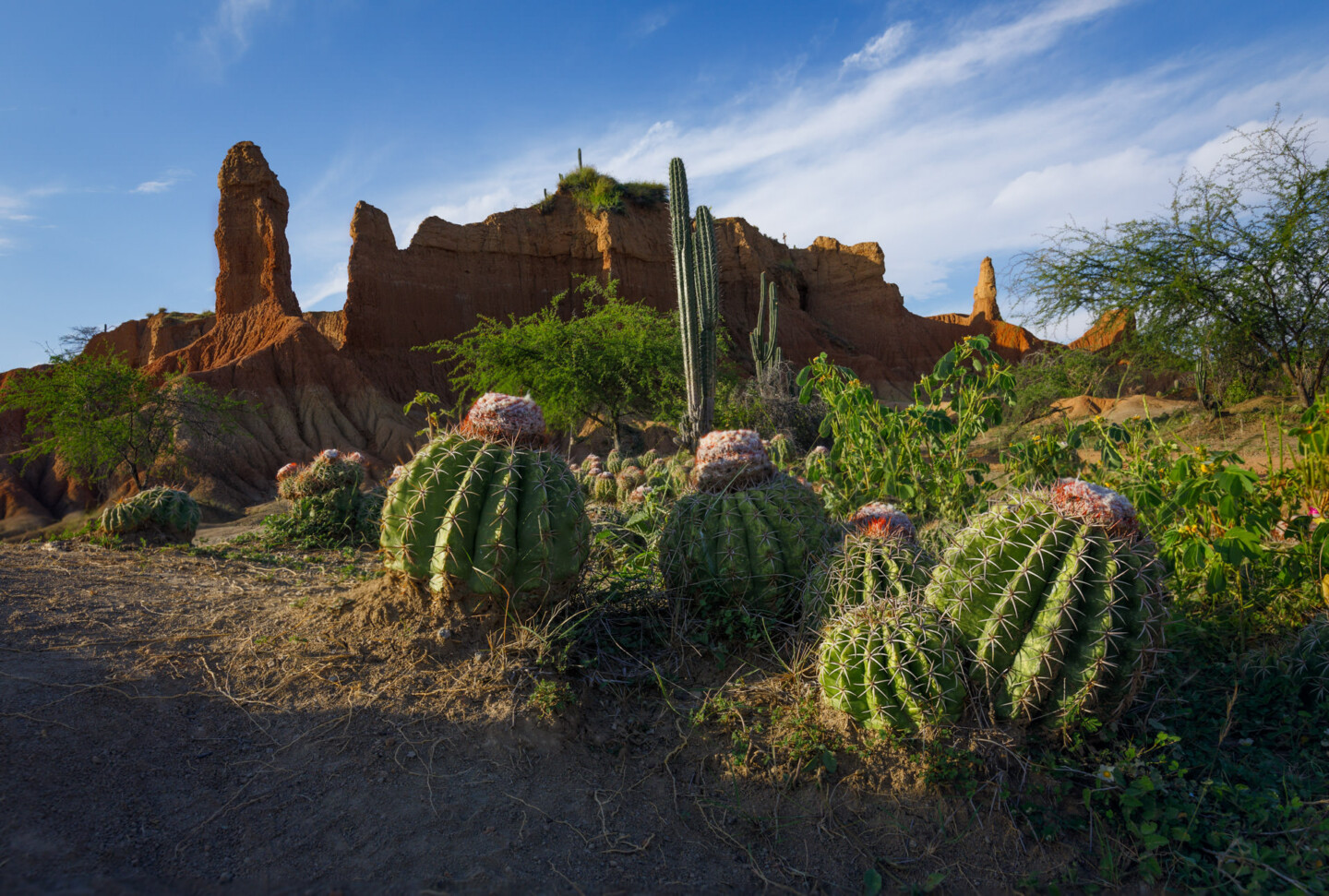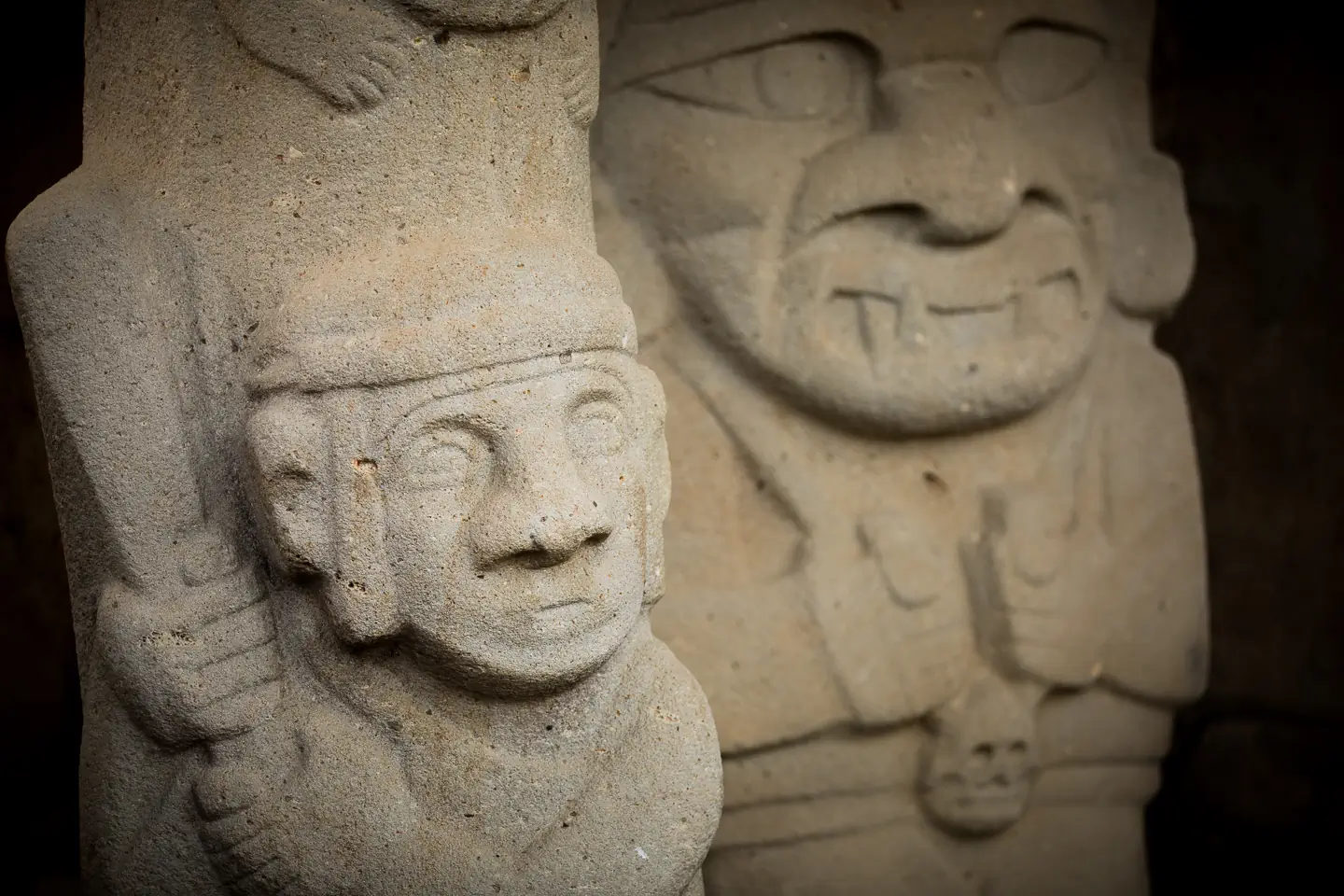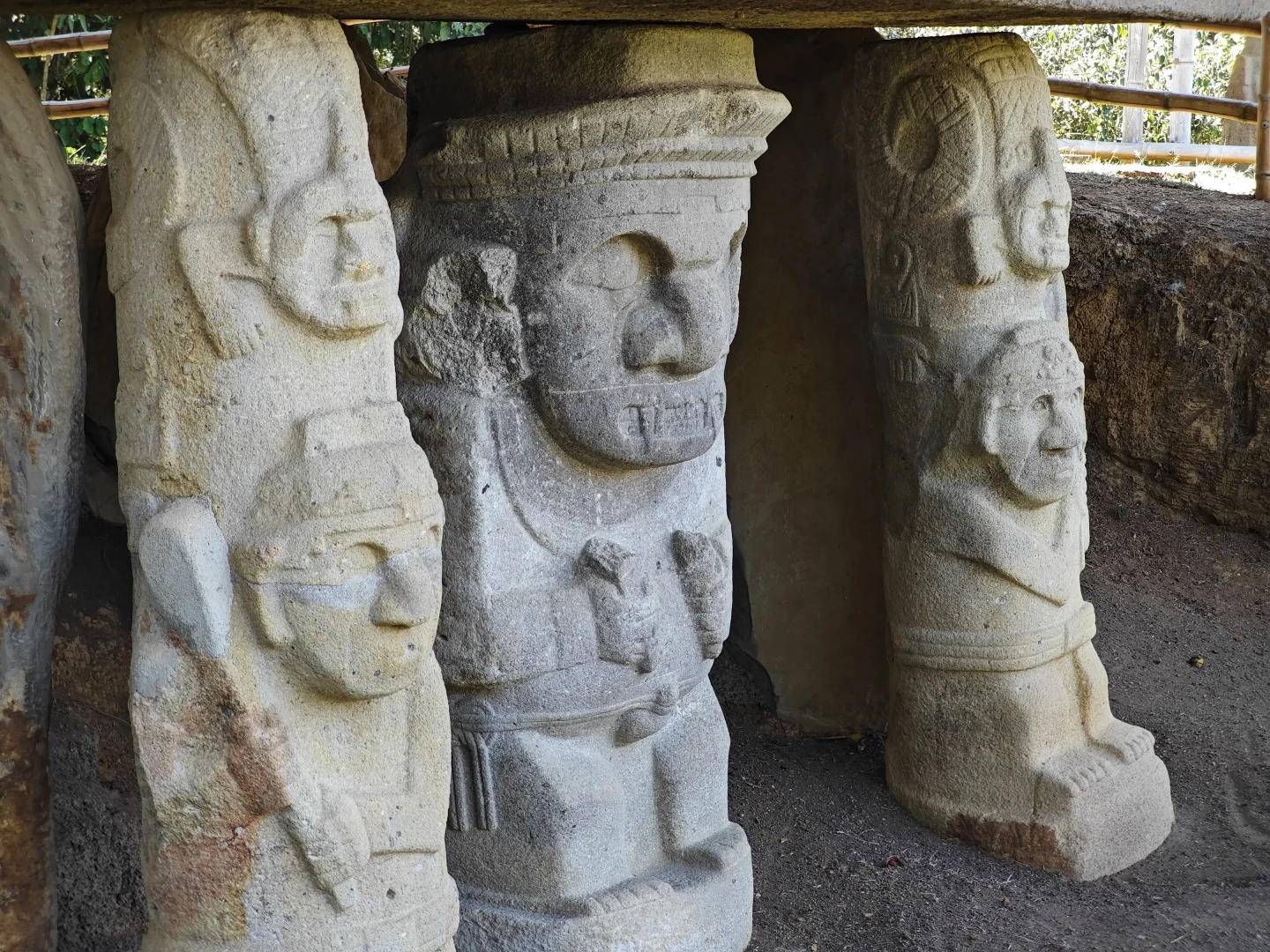Andean Region (Región Andina)
Nestled in Colombia's heart, the Andean Region (Región Andina) dazzles with towering peaks, lush coffee plantations, and vibrant cities like Bogotá and Medellín. From the Cocora Valley's wax palms to traditional pueblos, it blends breathtaking landscapes with rich culture. Adventure seekers and culture lovers alike will find endless charm in its highland wonders and warm, welcoming spirit.
L'essentiel
- Mois les plus propices à la visite : Décembre, février, janvier, novembre
zone Faits
- Geographical Location: Mountainous region in central and northern Colombia, spanning the Andes mountain range.
- Main City/Town: Bogotá (also the national capital), Medellín, and Cali are the principal urban centers.
- Approximate Area: N/A (varies by departmental boundaries within the region).
- Key Geographical Features: Andes Mountains (Cordillera Oriental, Central, and Occidental), Magdalena and Cauca Rivers, Nevado del Ruiz volcano, Cocora Valley.
- Dominant Climate Type: Varied due to altitude, ranging from temperate (17–24°C / 63–75°F) in mid-elevations to cold (below 12°C / 54°F) in high-altitude páramos.
- Population: ~34 million (majority of Colombia's population resides in this region).
- Main Economic Activities: Coffee cultivation, flower exports, mining (gold, emeralds), manufacturing, and tourism.
- Common Languages/Dialects Spoken: Spanish (with regional accents); indigenous languages like Quechua in some areas.
- Best Time to Visit: December to March and July to August (dry seasons for trekking and outdoor activities).
- Unique Selling Points:
- Colombia’s Coffee Cultural Landscape (UNESCO-listed).
- Breathtaking Andean landscapes, including the wax palm forests of Cocora Valley.
Visites et excursions d'une journée
Guatapé & El Peñol Day Trip
Just a few hours from Medellín, this tour takes travelers to the vibrant town of Guatapé, famous for its colorful zócalos (decorative frescoes) and the towering El Peñol Rock. Climb the 740 steps to the top for breathtaking views of the surrounding lakes and islands. The tour often includes a boat ride on the Guatapé Reservoir, where you can explore hidden coves and learn about the region's hydroelectric history. Perfect for families, photographers, and adventure seekers, this full-day excursion blends culture, nature, and adrenaline.
Coffee Farm Tour in Salento
Immerse yourself in Colombia's coffee culture with a visit to a traditional finca (coffee farm) in Salento, part of the UNESCO-listed Coffee Cultural Landscape. Learn about the bean-to-cup process, from harvesting to roasting, and savor a freshly brewed cup amid the rolling green hills of the Andes. The tour often includes a stroll through the charming town of Salento and a hike to the nearby Cocora Valley, home to towering wax palms. Ideal for coffee lovers, nature enthusiasts, and slow travelers, this experience lasts a full day.
Randonnée de la Cité Perdue (Ciudad Perdida)
For the intrepid, this multi-day trek through the Sierra Nevada de Santa Marta leads to the ancient Ciudad Perdida (Lost City), a pre-Columbian archaeological site older than Machu Picchu. The challenging 4- to 5-day hike traverses jungles, rivers, and indigenous villages, offering a deep connection to Colombia's indigenous heritage and untouched landscapes. Recommended for experienced hikers and history buffs, this tour is a once-in-a-lifetime adventure.
Villa de Leyva Colonial Exploration
Step back in time in Villa de Leyva, a beautifully preserved colonial town with cobblestone streets and whitewashed buildings. Day trips often include visits to the Plaza Mayor (one of the largest town squares in South America), the Paleontological Museum, and nearby natural wonders like the Pozos Azules (blue wells). Artisans' workshops and local wineries add to the charm. A great fit for history lovers, couples, and leisurely explorers, this excursion can be done in a day from Bogotá.
Paramo de Sumapaz Hiking Adventure
Escape the city to hike in Sumapaz Páramo, the world's largest páramo (high-altitude ecosystem), located just a few hours from Bogotá. This unique landscape of frailejones (giant succulents) and misty lagoons feels otherworldly. Guided tours highlight the area's biodiversity and conservation efforts. Best suited for nature lovers and moderate hikers, this day trip offers serenity and stunning vistas.
Quand visiter
Best Time to Visit Andean Region (Región Andina)
Répartition saisonnière
The Andean Region of Colombia experiences a tropical mountain climate with two primary seasons: the dry season (December to March and July to August) and the wet season (April to June and September to November). Due to its elevation, temperatures vary significantly by altitude, but generally remain mild year-round.
Dry Season (December to March, July to August)
During the dry season, expect sunny days with cooler nights. Temperatures range from 10°C to 20°C (50°F to 68°F) in higher areas like Bogotá and warmer in valleys like Medellín (18°C to 28°C / 64°F to 82°F). Rainfall is minimal, making it ideal for outdoor activities.
- Pros: Clear skies, perfect for hiking and sightseeing. Major festivals like the Feria de Cali (December) and Carnaval de Negros y Blancos (January) occur during this time.
- Cons: Peak tourist season means higher prices and crowded attractions.
Wet Season (April to June, September to November)
The wet season brings frequent afternoon showers and lush landscapes. Temperatures remain similar, but humidity rises. Rainfall is heaviest in April-May and October-November.
- Pros: Fewer tourists, lower prices, and vibrant greenery. Ideal for coffee region tours and cultural immersion.
- Cons: Some trails may be muddy or inaccessible. Events like the Festival de la Leyenda Vallenata (April) can draw crowds despite the rain.
Recommandation générale
The best time to visit is during the dry seasons (December-March or July-August) for optimal weather and activities. However, budget travelers or those seeking fewer crowds may prefer the shoulder months of June or September, when rainfall is lighter.
Considérations
Peak seasons (December-January, July-August) see higher hotel rates and busier attractions. For a balance of good weather and affordability, consider late February or early March. Always pack layers—temperatures drop significantly at night in higher-altitude cities.
Ce qu'il faut emporter
What to Pack for the Andean Region (Región Andina)
The Andean Region of Colombia is characterized by its high-altitude terrain, cool to mild temperatures, and unpredictable weather. Whether exploring colonial cities like Bogotá or trekking through the Cocora Valley, these essentials will ensure comfort and preparedness.
Clothing & Layering
- Lightweight Layers: Temperatures fluctuate dramatically between day and night. Pack breathable base layers, a fleece, and a warm jacket.
- Waterproof Shell: Sudden rain showers are common, especially in cloud forests or higher elevations.
- Sturdy Hiking Shoes: Essential for uneven terrain and cobblestone streets in towns like Villa de Leyva.
- Sun Hat & Sunglasses: High-altitude sun exposure is intense, even on cloudy days.
Gear & Accessories
- Reusable Water Bottle: Stay hydrated at altitude; many towns have safe refill stations.
- Daypack with Rain Cover: Protects belongings during hikes or city explorations.
- Altitude Sickness Remedies: Coca tea bags or over-the-counter medication can help with adjustment.
- Power Adapter: Colombia uses Type A/B outlets (110V).
Extras
- Modest Clothing for Churches: Shoulders and knees should be covered when visiting religious sites.
- Binoculars: Ideal for spotting Andean condors or colorful birdlife in cloud forests.
- Small Bills in COP: Many rural areas prefer cash, and ATMs may be scarce.
Comment s'y rendre
Par avion
The Andean Region is well-connected by air, with several major airports serving key cities. The primary international gateways are:
- El Dorado International Airport (BOG) in Bogotá: Colombia's busiest airport, offering direct flights from major international hubs. From here, travelers can take domestic flights, buses, or rental cars to other Andean cities like Medellín, Cali, or Manizales.
- José María Córdova International Airport (MDE) near Medellín: Another key airport with international and domestic connections. Taxis, buses, and ride-sharing apps are available to reach the city center or nearby towns.
- Alfonso Bonilla Aragón International Airport (CLO) in Cali: Serves domestic and limited international flights. Buses and taxis provide easy access to the city and surrounding areas.
Practical Advice: Domestic flights within Colombia are affordable and efficient, often taking under 1 hour between major Andean cities. Book in advance for better fares, especially during peak travel seasons.
En bus/car
Colombia's extensive bus network makes the Andean Region accessible from most parts of the country. Key routes include:
- Bogotá to Medellín: Approximately 9–10 hours by express bus, with services like Bolivariano or Expreso Brasilia.
- Cali to Manizales: Around 5–6 hours, with frequent departures from Cali's Terminal de Transportes.
- Bucaramanga to Bogotá: A scenic 8–9 hour journey through the Andes.
Practical Advice: Buses are comfortable and budget-friendly, but travel times can be long due to mountainous terrain. Opt for executive or luxury class for more comfort. Book tickets in advance during holidays or weekends.
En voiture (conduite)
The Andean Region is crisscrossed by well-maintained highways, though mountainous roads require caution. Key routes include:
- Autopista Medellín-Bogotá: A major highway connecting Colombia's two largest cities, passing through scenic landscapes.
- La Línea: A high-altitude route between Armenia and Ibagué, known for its tunnels and stunning views.
- Pan-American Highway: Runs through the region, linking Cali, Popayán, and Pasto.
Practical Advice: Driving in the Andes can be challenging due to steep curves and variable weather. A 4x4 is not usually necessary but recommended for rural areas. Toll roads are common, so carry cash in Colombian pesos.
Par Train
Colombia's passenger train network is limited, but the Tren Turístico de la Sabana offers scenic rides from Bogotá to nearby towns like Zipaquirá. For longer distances, buses or flights are more practical.
Se déplacer
Public Buses and Colectivos
The Andean Region is well-connected by an extensive network of public buses and colectivos (shared minivans). These are the most affordable and common way to travel between cities and towns. In major cities like Bogotá, Medellín, and Cali, buses operate on fixed routes with frequent departures. Colectivos are faster but less formal—simply flag one down and pay the driver in cash.
- Cost: Buses range from $1–$3 USD; colectivos may cost slightly more.
- Tips: Have small bills ready. Routes are rarely posted in English, so ask locals or your accommodation for guidance.
Taxis et covoiturage
Taxis are widely available in urban areas and can be hailed on the street or booked via apps like Uber or Cabify. Always ensure the meter is running or agree on a fare beforehand to avoid overcharging. In smaller towns, taxis may not use meters, so negotiate the price in advance.
- Cost: Short rides start at $2–$5 USD; longer trips vary.
- Tips: Use ride-sharing apps for transparency, especially in Bogotá and Medellín.
Walking and Cycling
Many Andean cities, like Medellín and Bogotá, are pedestrian-friendly, with historic centers best explored on foot. Bogotá’s Ciclovía program closes streets to cars on Sundays, making cycling a popular option. Bike rentals are available in tourist areas, and apps like Tembici offer shared bikes in some cities.
- Cost: Bike rentals start at $5 USD/hour or $15/day.
- Tips: Stick to well-lit areas at night and use bike lanes where available.
Cable Cars and Metro
Medellín’s Metro and Metrocable (aerial cable car system) are efficient ways to navigate the city and reach hillside neighborhoods. The metro is clean, safe, and affordable, while the Metrocable offers stunning views. In Bogotá, the TransMilenio bus rapid transit system is a faster alternative to regular buses.
- Cost: Metro/Metrocable fares start at $0.75 USD; TransMilenio fares are similar.
- Tips: Purchase a rechargeable Civica card (Medellín) or Tullave card (Bogotá) for convenience.
Car and Motorcycle Rentals
Renting a car or motorcycle is ideal for exploring rural areas like the Coffee Triangle or Boyacá’s countryside. Roads are generally well-maintained, but mountainous terrain requires cautious driving. International rental agencies operate in major cities, and scooters are available in tourist hubs like Salento.
- Cost: Car rentals start at $30 USD/day; scooters around $20 USD/day.
- Tips: Check for toll roads and parking availability in advance.
Des transports locaux uniques
In smaller towns, you might encounter chivas (colorful open-air buses) or mototaxis (motorcycle taxis), especially in rural areas like Villa de Leyva. These are cheap and adventurous but lack comfort. In the Coffee Region, jeep Willys (rugged jeeps) are used for steep mountain roads.
- Cost: Chivas and mototaxis cost $1–$3 USD per ride.
- Tips: Hold on tight—these rides can be bumpy!
Culture
A Cultural Tapestry of Mountains and Traditions
The Andean Region of Colombia is a vibrant cultural heartland, where indigenous roots, colonial legacies, and contemporary creativity intertwine. Stretching across the rugged peaks and fertile valleys of the Andes, this region is home to bustling cities like Bogotá, Medellín, and Manizales, as well as picturesque pueblos where time-honored customs thrive. The highland climate, terraced farmlands, and coffee-growing traditions shape a way of life distinct from Colombia's coastal or Amazonian zones.
Langue et dialectes
While Spanish dominates, the Andean dialect is notable for its clear pronunciation and moderate pace, distinct from the rapid-fire coastal speech. Indigenous languages like Quechua and Muisca influences linger in place names and local vocabulary. In rural areas, you might hear unique slang like "parcero" (buddy) or "chévere" (cool), especially in Antioquia's paisa culture.
Musique et danse
The Andes pulse with rhythms like bambuco and pasillo, melancholic waltz-like tunes often accompanied by the tiple (a small guitar). The guabina dance, with its graceful turns and handkerchief flourishes, is a highlight of festivals. In contrast, Medellín's tango scene nods to its urban soul, while modern reggaeton and vallenato fuse with traditional sounds in youth culture.
Cuisine: From Farm to Table
High-altitude agriculture yields staples like papa criolla (yellow potatoes), maíz (corn), and fríjoles (beans). Must-try dishes include:
- Bandeja Paisa – A hearty platter of beans, rice, chorizo, chicharrón, avocado, and arepa, emblematic of Antioquia.
- Ajiaco – Bogotá's creamy potato soup with chicken, capers, and guascas (a local herb).
- Lechona – Tolima's slow-roasted pork stuffed with rice and peas, a festival favorite.
Don’t miss arepas (corn cakes), often thicker here than on the coast, or hot chocolate con queso—a quirky but beloved pairing.
Festivals and Crafts
The region’s calendar overflows with celebrations:
- Feria de las Flores (Medellín) – A riot of flower displays, parades, and silleteros (flower-laden backpacks).
- Carnaval de Blancos y Negros (Pasto) – A vibrant clash of painted faces and cultural symbolism.
- Semana Santa (Popayán) – Colombia’s most solemn Easter processions, with baroque religious artistry.
Artisans excel in ruana wool ponchos, ceramics from Ráquira, and filigree jewelry in Mompox-style silverwork.
Social Customs and Daily Life
Andean culture values familia and hospitality, often sharing meals or tinto (black coffee) with guests. In small towns, the plaza mayor remains a social hub, while cities blend cosmopolitan energy with café culture and salsa bars. Respect for elders and Catholic traditions (like Sunday mass) is strong, though urban youth increasingly challenge norms.
